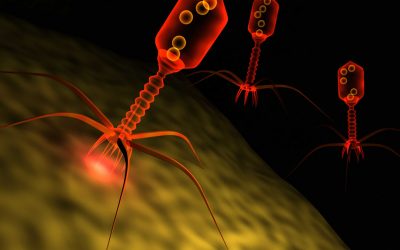Ruminant feeding in the face of disease and parasites

This article offers some insights into the most common disease problems in cattle and the feeding strategies that can be adopted to reduce the impact of sickness on animal production and the profitability of farm operations.
Legume bloat
Proper management of bloat is important, not only for reducing deaths but also for alleviating the negative effects of bloat on animal performance. These targets can be achieved by allowing susceptible animals to graze only bloat-safe legumes, or to fill them with dry hay or grass pasture before turning them out onto bloat-causing pastures.
Avoid frequent or major changes:
Frequent or major changes in the type of pasture being grazed should be avoided unless the animals have greatly distended rumens. Mild bloat is common in the types of pasture that causes bloat and the changes may prevent rumen microbes and animals from adapting to these pastures.
Late grazing vs early-morning gazing:
The risk of bloat may also be reduced by late rather than early-morning grazing. In one study, the concentration of chlorophyll – the major indicator of foaminess – was 211 mg/kg after early-feeding compared to 184 mg/kg after late-feeding.
Antifoaming chemicals:
Finally, antifoaming chemicals such as poloxalene should be fed in adequate amounts starting 2-5 days before turning cattle out onto pasture.
Nitrate poisoning
Plants such as alfalfa, sweet clover, oats, ryegrass, sudangrass, wheat, and corn are known to accumulate nitrates to dangerous levels. This is especially the case when they are grown in soils with sulphur deficiency, phosphorus deficiency, low temperatures (less than 13 ºC), and a lack of soil aeration. The nitrate ion itself is not toxic. However, ruminants readily reduce nitrate to nitrite which oxidises haemoglobin to meth-haemoglobin which is unable to carry oxygen and transport it to the body tissues, with the resulting symptoms of respiratory distress, vomiting and squealing. The provision of additional roughage and concentrates will reduce the incidence of nitrate poisoning, as these feeds will dilute the nitrate and assist in its metabolism to ammonia and ultimately microbial protein.
 The effect of intercropping on cattle feed
The effect of intercropping on cattle feed
What are the effects of various intercrops on the feed utilisation and milk production of dairy cows? And what is the best strategy for optimising intercropping systems? What is their economic impact? Let’s discuss these issues.
Acidosis
There has been some concern that providing feed once a day may result in slug feeding, which could predispose a cow to sub-acute rumen acidosis. Alternatively, more frequent offerings of feed may result in cows spreading out their feeding time more evenly throughout the day. Further, a steady input of nutrients into the rumen over the day should benefit rumen function, which in turn may reduce the risk of sub-acute rumen acidosis.

Mastitis
It appears that cows supplemented with vitamin E at 740 mg/d during the dry period have a 37% lower incidence of mastitis after calving than control cows. The combination of vitamin E and selenium at 0.3 ppm in the total ration reduced the number of quarters that had clinical signs of mastitis by 41%. These results provide evidence for an interaction between vitamin E and selenium in controlling mastitis. A later study reported a 42% decrease in the incidence of mastitis at calving in heifers that were supplemented with vitamin E and selenium for 60 days before calving. Supplementation of copper (as copper sulfate or copper proteinate) to heifers prepartum may also help reduce the incidence and severity of mastitis at calving. Heifers supplemented with 20 ppm copper before calving have less infected quarters after calving than heifers not supplemented with copper.
Gastro-intestinal (G.I.) parasites
Animals on low protein diets are more susceptible to parasite infection because they produce less immunoglobulin IgA. Protein supplements should then be considered, particularly for young susceptible animals in order to improve resistance to parasites.
Animals infected with parasites use less calcium and phosphorus and should therefore be provided with an adequate supply of calcium and phosphorus to compensate for the deficiency.
Vitamin A is also important to improve the intestinal epithelial integrity and the function of the intestinal immune system, both of which are disrupted by parasitism.
 Effects of gossypol in cottonseed meal rations on cows
Effects of gossypol in cottonseed meal rations on cows
Cottonseed meal is a by-product of cotton and contains varying amounts of gossypol, a phenolic compound produced by pigment glands in cotton stems, leaves, seeds and flower buds, which limits cottonseed use in feeding.
External parasites
External parasite infestation can adversely affect the protein status of the animal. Assuming an animal is infested with 200 ticks, it may lose 200 ml of blood or 40 g of protein (assuming that blood is 20% protein) each day. With such a loss of protein, animals also produce more heat and the ME utilisation will thus be lower. In this case, there will be reduced self-grooming with shedding of hair, and animals will become more susceptible to further infestation. The increased requirements for a protein of 40 g could be met either by feeding an extra 150 g of cottonseed meal or by feeding an extra 250 g of digestible carbohydrate to allow the production of more microbial protein in the rumen.
References are available from the author upon request











